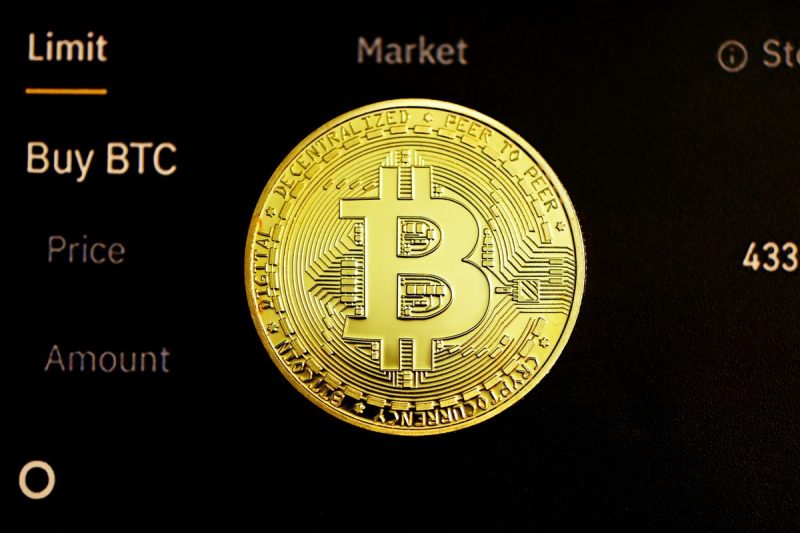

Here’s a quick recap of the crypto landscape for Friday (November 14) as of 9:00 p.m. UTC.
Get the latest insights on Bitcoin, Ether and altcoins, along with a round-up of key cryptocurrency market news.
Bitcoin and Ether price update
Bitcoin (BTC) was priced at US$94,223.98, a 4 percent increase in 24 hours and its lowest valuation of the day. Its highest was US$97,203.84.

Bitcoin price performance, November 14, 2025.
Chart via TradingView.
Bitcoin’s drop below US$95,000 on Friday, driven by expiring derivatives, whale selling, and weak institutional and retail demand, has intensified fears of an entrenched bear market.
Analysts predict Q4 could be Bitcoin’s “worst fourth quarter on record.’
On X, analyst @follis_ notes that the Wyckoff Distribution model, a classic five phase pattern typically observed near market tops and often precursor to prolonged selling pressure, could signal a potential end to Bitcoin’s bull run.
The pattern suggests that after a buying climax near US$122,000 and a sequence of tests failing to create new highs, the price entered a markdown phase. Bitcoin could drop to US$86,000 if key support levels fail to hold.
Meanwhile, Ether (ETH) was priced at US$3,129.77, a 1.6 percent decrease in the last 24 hours. Its lowest valuation of the day was US$3,131.31, while its highest was US$3,246.27.
Altcoin price update
- Solana (SOL) was priced at US$139.74, down by 1.9 percent over the last 24 hours. Its lowest valuation of the day was US$138.83, while its highest was US$143.61.
- XRP was trading for US$2.27, down by 1.5 percent over the last 24 hours. Its lowest valuation of the day was US$2.26, while its highest was US$2.33.
Fear and Greed Index snapshot
Bitcoin’s bearish trajectory has pushed market sentiment into extreme fear. As of today, CMC’s Crypto Fear & Greed Index continues to trend in extreme fear territory with the indicator sitting at 22, marking the lowest levels of investor confidence since March and signaling that traders are highly cautious about entering the market.

CMC Crypto Fear and Greed Index, Bitcoin price and Bitcoin volume.
Chart via CoinMarketCap.
Derivatives data
Bitcoin and Ether futures markets saw a wave of long-side liquidations in the hours leading up to the end of the trading day, signaling trader capitulation amid continued price weakness. Roughly US$65.24 million in Bitcoin positions were liquidated over a four hour window, with the bulk coming from longs. Ether followed a similar pattern, registering US$22.13 million in liquidations, again concentrated among leveraged long positions.
The liquidations coincided with a clear contraction in open interest, suggesting that traders not only endured forced unwinds but also reduced overall exposure. Bitcoin open interest slipped 2.3 percent to US$66.05 billion, while Ether open interest saw a sharper 3.8 percent decline to US$36.31 billion.
Funding rates stayed positive — 0.007 for Bitcoin and 0.012 for Ether — indicating that the futures market remained slightly tilted toward bullish positioning despite the shakeout.
However, Bitcoin’s relative strength index sat at a notably low 27.33, entering the oversold zone and hinting that derivatives pressure may have pushed the market toward a possible short-term exhaustion point.
Taken together, the metrics point to forced deleveraging rather than a broad directional shift, though sustained weakness in open interest could temper near-term volatility once liquidation volumes normalize.
Today’s crypto news to know
Saylor denies reports of Bitcoin selloff
Strategy’s (NASDAQ:MSTR) Michael Saylor took to X on Friday to debunk reports that the company has reduced its Bitcoin holdings by roughly 47,000 BTC.
“I think the volatility comes with the territory,” he reiterated in a CNBC interview that day. “If you’re going to be a Bitcoin investor, you need a four-year time horizon and you need to be prepared to handle the volatility in this market.”
An earlier post from @Crypto Crib claims that the company had offloaded over 30,000 BTC; however, community-supplied context clarifies that 22,704 BTC were moved on October 31, and that these transfers were internal custody movements, not open-market sales.
Tether expanding commodity lending
In an interview with Bloomberg, Tether CEO Paolo Ardoino said the company is ‘expanding its presence in commodity lending,’ noting that the focus going forward will include traditional commodity trades like agriculture and oil managed under its new Trade Finance unit, which provides short-term credit for global supply chains.
The company has lent roughly US$1.5 billion in credit to commodities traders so far.
Alibaba builds tokenized payment system
Alibaba Grou Holding (NYSE:BABA) is developing a stablecoin-like system to streamline cross-border payments for its US$35 billion e-commerce network, aiming for a year-end launch.
The tokenized platform will initially support US dollars and euros, and will include further plans to expand to additional currencies using JPMorgan’s tokenization technology.
Under the system, artificial intelligence-driven smart contracts will automate settlements, dispute resolution, and conditional fund releases to reduce friction in B2B transactions. The system will operate alongside Alibaba’s Agentic Pay rail to enhance speed and transparency.
While not a formal stablecoin, the solution acts as a fiat-backed digital token for settlement purposes.
UAE tightens crypto access
The United Arab Emirates (UAE) has enacted a new central bank law that broadens licensing requirements for financial services, effectively criminalizing unlicensed crypto activity. Article 170 imposes penalties, including fines up to AED 500 million (US$136 million) and imprisonment, for offering financial products without authorization.
Self-custody tools, such as Bitcoin wallets, blockchain explorers, and market-data services, now fall under the licensing net, creating compliance challenges for providers inside and outside the UAE.
Article 61 further restricts promotion, marketing, or publication of unlicensed financial activities, affecting even online communications. Companies have a one year window to comply, subject to central bank discretion.
Uniswap introduces continuous clearing auctions
Uniswap introduced continuous clearing auctions on Thursday (November 13), a new protocol aiming to facilitate token offerings through its infrastructure. The company said that the protocol will help teams ‘bootstrap liquidity on Uniswap v4 and find the market price for new and low-liquidity tokens,’ adding that several additional tools currently under development will eventually be added to help projects launch and deepen token liquidity on the platform.
Securities Disclosure: I, Giann Liguid, hold no direct investment interest in any company mentioned in this article.
Securities Disclosure: I, Meagen Seatter, hold no direct investment interest in any company mentioned in this article.


















